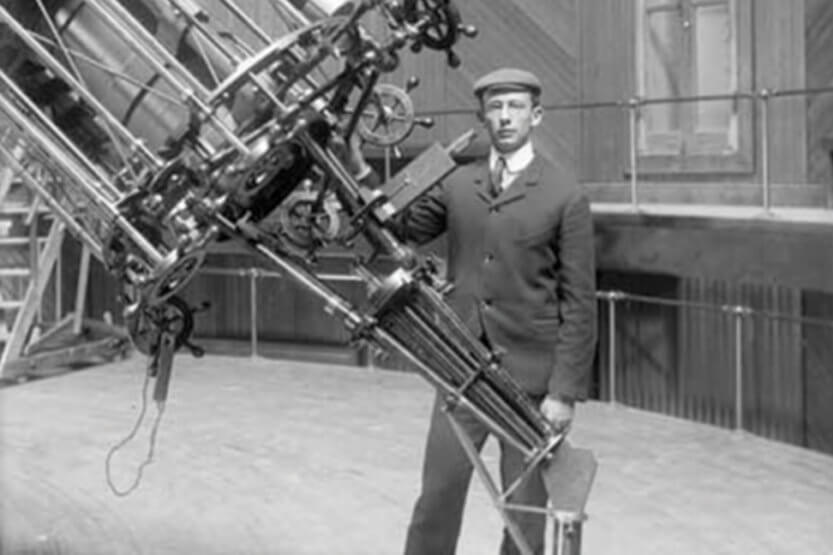Ingenious: Photometry Star
 Astronomy professor Joel Stebbins attached a selenium cell to his telescope and transformed starlight into electrical energy to take measurements. (Image courtesy of Illinois Distributed Museum)
Astronomy professor Joel Stebbins attached a selenium cell to his telescope and transformed starlight into electrical energy to take measurements. (Image courtesy of Illinois Distributed Museum) When Joel Stebbins began his astronomical research at the U of I in 1903, his new wife, May Louise, wasn’t happy that her husband spent so many evenings at the observatory. As Stebbins later said, “She found that if she came to the observatory and acted as a recorder, she could get me home earlier.”
So, while Stebbins measured the brightness of the moon and stars through his telescope, May Louise recorded his readings, telling him that, “it’s pretty slow business.”
“I responded that someday we would do all this by electricity,” Stebbins recalled. “That was a fatal remark. Thereafter, she would often prod me with the question, ‘When are you going to change to electricity?’”
He finally answered her question when he met Illinois physicist, Fay C. Brown, who “showed how when he turned on a lamp to illuminate a selenium cell, a bell would ring,” Stebbins wrote. In 1905, Stebbins and Brown attached a selenium cell—a photoelectric device used to generate an electric current—to their telescope and transformed starlight into electrical energy to take measurements.
Their first test successfully measured the brightness of the moon through its various phases and in the process, revolutionized astronomical photometry—the science of measuring light from celestial objects to determine their distance, age, structure and other distinguishing features.
Serendipity often led to fresh discoveries. On one occasion, Stebbins accidently dropped a selenium cell, breaking it in half. He discovered that the two smaller cells were each twice as good as the larger one. Later, he switched to photoelectric cells—a vast improvement over selenium cells.
“In the years at Illinois, I must have undergone all the experiences possible in photometry,” Stebbins said. “Surely I committed most of the blunders and mistakes that anyone can think of. But there was one mistake I never made; I never tried to carry on entirely alone.”
Sources: “Illinois—Where Astronomical Photometry Grew Up,” by Barry B. Beaman and Michael T. Svec, Journal of the American Association of Variable Star Observers; and “Early Photometry at Illinois,” by Joel Stebbins, Publications of the Astronomical Society of the Pacific.

